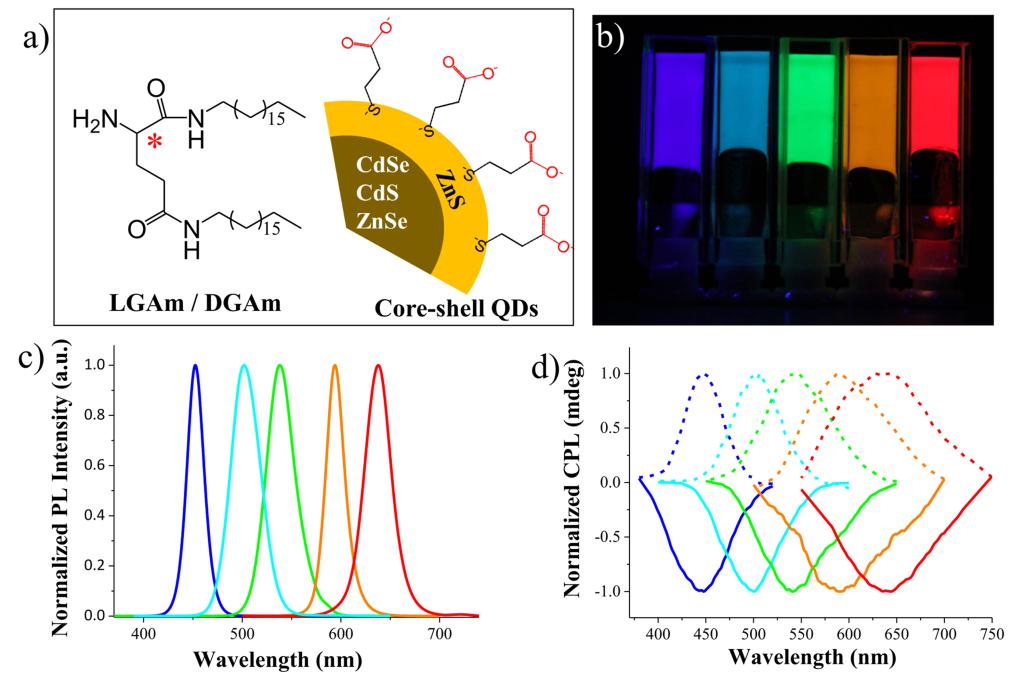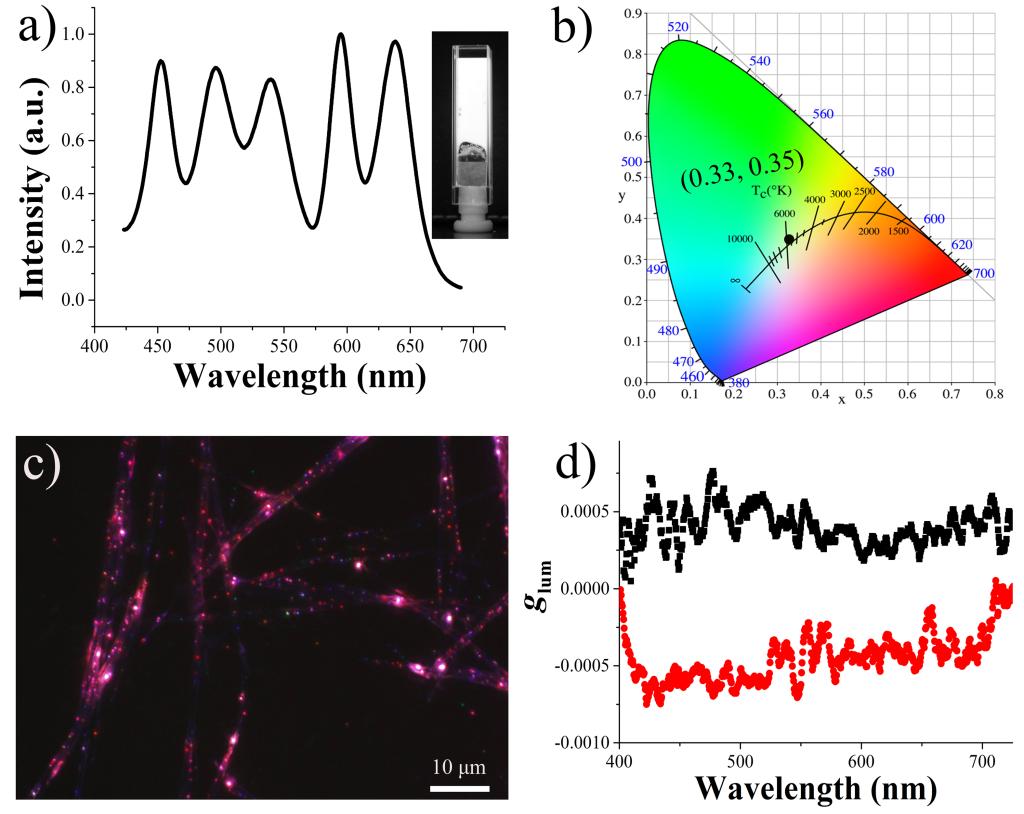[News from News Center] Recently, cooperating with Researcher Pengfei Duan (National Center for Nanoscience and Technology) and Researcher Minghua Liu (Institute of Chemistry, Chinese Academy of Sciences), Prof. Tifeng Jiao’s team under YSU School of Environment and Chemistry made major progress in Circularly Polarized Luminescent Inorganic Quantum Dots (QDs) Research. On July 31st, 2017, the research results were published on Angewandte Chemie (International Edition), entitled Full- and White Color Circularly Polarized Luminescent Quantum Dots via Supramolecular Self-Assembly. As a top journal with an Impact Factor of 11.94 in chemistry, Angewandte Chemie includes forefront high-end papers in chemistry research.
The fabrication of inorganic quantum dots has attracted great interest of scholars at home and abroad in the past decade. As everyone knows, the luminescent performance has many advantages. For example:the emission spectra can be controlled by changing the size of quantum dots; sound light stability; wide excitation spectra and intense emission spectra; relatively large Stokes shift; good biocompatibility, and long fluorescence lifetime. Two ways to fabricate inorganic quantum dots with chirality are mostly adopted in current research progress: (1) Modify chiral ligands on quantum dots surface to provide a chiral environment for quantum dots. Cysteine is most used in reported literature. (2) Providing a chiral template for quantum dots can induce the chirality of quantum dots such as chiral protein. However, thecircularly polarized luminescence (CDL) has hardly shown in quantum dots,although the circular dichroism (CD) can be measured. Thus, a general approach inducing the CDL of QDs is particularly important. In the research, theyproposed an alternative to the use of chiral capping reagents on QDs for the fabrication of CPL-active QDs that is based on the supramolecular self-assembly of achiral QDs with chiral gels. As shown in Figure 1, interaction between gels and QDs throughhydrogen bond can enable the chirality of gels be to quantum dots, and mirror-image CPL signals can be seen clearly from CPL spectra. Meanwhile, the chiral induction toCdS/ZnS,CdSe/ZnS,ZnSe/ZnS quantum dots showed mirror-image CPL signals. Thus this method is a general approach for fabricating CPL-active QDs. There are plenty of studies on achieving white emission through tuning the mixing ratio of QDs with different emission wavelength, but to date, QDs with white circular polarized light emission have never been reported. They are the first gaining QDs with white circular polarized light emission by tuning the mixing ratio, as shown in Figure2. The research results show great application prospect in areas like 3D imaging technology, molecular switch, optical data storage, Light Quantum Information, spinning electron, chiral recognition, and medical imaging enhancement.

Figure1. a)Molecular structure of the gels and the QDs;b)Photograph of various QD doped co-gels in different colors under UV light; c) Fluorescence spectra of the corresponding co-gels; d) Mirror-image CPL spectra of the corresponding co-gels.

Figure2. a)Fluorescence spectra of the white-light-emitting co-gel. Inset: Photograph of the gel under UVirradiation; b) Commission Internationale de I’Éclairage (CIE) coordinate value of the white-light-emitting co-gel; c) Fluorescence microscopy image of the white-light-emitting co-gel; d) CPL dissymmetry factor glum as a function of the reported.
YSU master degree candidate Shengwei Huo is the first author of the paper, with Prof. Tifeng Jiao, Researcher Pengfei Duan, and Researcher Minghua Liu as corresponding authors. The research results reveal the fast development of YSU discipline construction and scientific research level, which further improves the sense of duty in faculty and staff to strive for first-rate, and lays a firm foundation for the ranking of chemistry discipline in ESI, greater development of engineering and material sciences, and YSU construction of Double First-rate. The research was supported by National Program on Key Basic Research Project, National Natural Science Foundation of China (NSFC), Strategic Priority Program of CAS, New 100-talent Program of CAS, Top-notch Talents Supporting Program in Hebei Province, and China Postdoctoral Science Foundation. (Translated by Zhengjie Li)